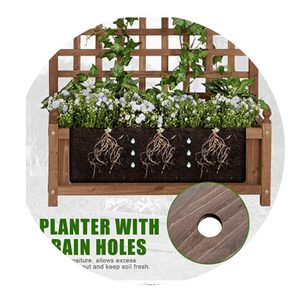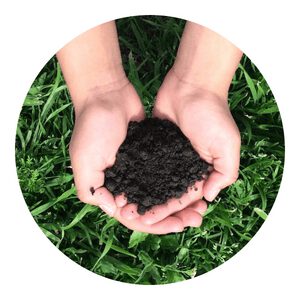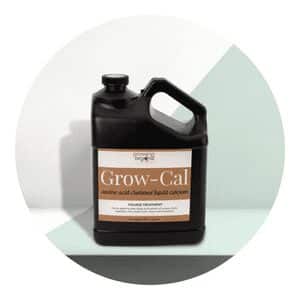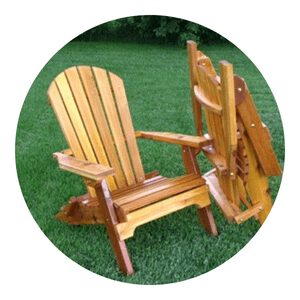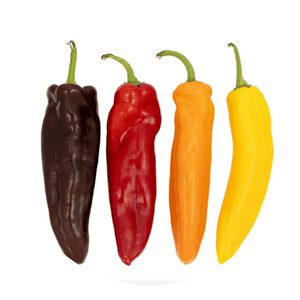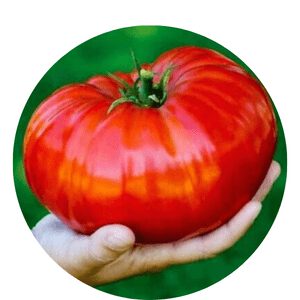How Do You Set Up A Summer Garden?
Summer is the perfect time to get outside and enjoy your garden.
But how do you set up a summer garden that will thrive?
Chappy the gardener has the answer in his new guide, “How Do You Set Up A Summer Garden?”
In this guide, Chappy walks you through everything you need to know to set up a beautiful summer garden, from choosing the right plants to getting the soil ready.
He also includes tips on how to keep your garden healthy and happy all season long.
With Chappy’s help, you can enjoy a bountiful summer harvest of fresh fruits, vegetables, and flowers.
So get out there and start gardening!

summer Grow Menu
This article will show you how to set up a summer garden without any preparation.
All you need is some dirt, plants, and water!
What is a summer garden?
There is no wrong time to plant a summer garden, but the height of the growing season is definitely in the summer.
You can have a flourishing vegetable garden even if you only have a small amount of space.
With a little bit of planning, you can create an oasis for homegrown vegetables and fruits.
What do you need to consider before planting?
When planning a garden, there are many factors to consider before planting.
The first step is to decide what you would like to grow.
Once you have an idea of the types of plants you would like, you need to research their sunlight and water requirements.
Most vegetables and fruits need at least six hours of direct sunlight per day, while others can grow in partial shade.
Another important factor to consider is the soil type.
Some plants do better in sandy soils while others prefer a more clayey soil.
If the soil is not suitable for the plants you have chosen, you can amend it by adding organic matter such as compost or manure.
The last thing to think about before planting is where your garden will be located.
You need to make sure that the area gets plenty of sun and has good drainage.
How do you make your soil ready for planting?
One of the most important aspects of gardening is preparing your soil for planting.
The type of soil you have and how you prepare it will determine what types of plants you can grow and how successful your garden will be.
There are a few things to consider when preparing your soil. The first is the type of soil you have.
Soil can be classified as clay, sand, or loam. Clay soils are heavy and sticky, while sandy soils are light and fast-draining.
Loam soils are a combination of clay, sand, and organic matter and are considered the best type of soil for growing plants.
The next thing to consider is pH level.
Soil pH is a measure of how acidic or alkaline the soil is.
Loosen the soil
There is no time like the present to start preparing your garden soil for summer planting.
One easy way to do this is by loosening the soil with a hoe or rake.
This will help air and water penetrate the soil, which will make it easier for your plants to take root.
You can also add organic matter to the soil to help it retain moisture and nutrients.
Mulch is a great way to do this, as it will also keep weeds at bay.
By taking these simple steps, you can ensure that your garden will be thriving once summer arrives.
Add organic matter
As the weather warms and the days grow longer, many gardeners are anxious to get their hands in the soil and start planting.
To ensure your garden is ready for summer, add organic matter to your soil before planting.
Organic matter improves soil fertility, water retention, and drainage. It also helps to suppress weeds and pests.
There are many different types of organic matter to choose from, including compost, manure, and mulch.
Be sure to use a quality organic matter that has been tested for contaminants like lead and arsenic.
Amend the soil pH
Do you have a garden plot that you plan to plant in the spring?
If so, it’s important to amend the soil pH to make sure your plants will thrive in the summer.
The pH scale ranges from 1-14, with 7 being neutral.
Most plants prefer a slightly acidic soil with a pH of 6.5-7.0.
You can test your soil’s pH level with a home testing kit, or take a soil sample to your local extension office for analysis.
If the pH is too high or too low, you can add amendments to adjust it.
Lime is used to make the soil more alkaline, while sulfur is used to make it more acidic.
Add organic fertiliser
As the days grow warmer and the snow begins to melt, many gardeners start to prepare for the upcoming growing season.
One important task is adding organic fertilizer to the soil in order to provide plants with the nutrients they need to thrive.
There are many different types of organic fertilizers available, so it’s important to select one that is best suited for your garden.
Organic fertilizers are made from natural ingredients, such as animal manure, compost, or plant extracts.
They are slower-acting than chemical fertilizers, but they are also more sustainable and less likely to damage the environment.
Organic fertilizers can be used to improve the quality of both soil and water.
When preparing your garden for summer planting, be sure to add some organic fertilizer to the soil.
Water the soil
Do you have a garden that you are anxious to plant but the soil is too dry?
There is no need to wait for rain, you can water the soil to make it ready for planting.
All you need is a hose and some time.
The best time to water your garden is early in the morning before the sun comes up or in the evening after the sun goes down.
This will help prevent the water from evaporating quickly.
If you live in an area where it rains frequently, you may not need to water your garden at all.
But, if it does not rain often, or if you have a drought, then you will need to water your garden regularly.
When watering your garden, be sure to wet the soil all the way down to the roots. You can do this by using a sprinkler or by watering with a hose.
Mulch
Mulching is an important part of gardening. It helps to conserve water, regulate soil temperature, and suppress weed growth.
When done correctly, mulching can also improve the overall health of your plants.
There are a variety of materials that can be used as mulch, but in this article we will focus on using mulch to prepare for summer planting.
There are several types of mulch that can be used for this purpose.
One option is to use a thick layer of organic material such as compost, leaves, or straw.
This will help to keep the soil cool and moist.
Another option is to use a layer of plastic sheeting or landscape fabric.
This will help to prevent the soil from drying out and also suppress weed growth.
How and when do you plant your summer garden?
Summertime is the perfect time to plant a garden. The soil is warm and the sun is shining.
But when is the best time to plant your garden? And how do you go about planting it?
The best time to plant most vegetables is in the spring, when the soil is still cool.
But you can also plant vegetables in the summertime.
Just make sure that you choose vegetables that thrive in hot weather.
To plant a garden, you first need to prepare the soil.
Dig up the dirt and mix in some organic matter, such as compost or manure.
Then use a rake to level out the surface.
Next, decide what you want to plant and where you want to plant it.
Make sure to leave enough room for each vegetable to grow.
Dig holes for each vegetable and place them in the holes.
How do you take care of your summer garden?
Now that the warmer weather is finally here, it’s time to think about how you’re going to take care of your summer garden.
The most important thing to remember is to water them regularly; a good rule of thumb is to give them an inch of water per week.
You can either use a hose or watering can, or if you have one, set up a drip irrigation system.
Another thing to keep in mind is that different plants need different amounts of sunlight; make sure to place them in an area that gets plenty of direct light.
And finally, don’t forget to fertilize your plants every so often; this will help them grow big and strong.
With a little bit of care and maintenance, you’ll be able to enjoy your beautiful summer garden all season long!
How do I prepare my garden bed for next year?
One of the tasks that every gardener looks forward to every fall is preparing their garden beds for the next year.
There are many ways to go about this, but here are some tips on how to prepare your garden bed for next year.
The first thing you need to do is remove all of the debris from the bed.
This includes dead plants, weeds, and any other material.
You can either compost this material or dispose of it in another way.
Once the debris is removed, you need to till the soil.
Tilling helps break up any clumps and prepares the soil for planting.
If there are any large rocks in the soil, you can remove them at this time.
Now it’s time to add some amendments to the soil.
You can add compost, manure, or other organic matter to help improve the quality of the soil.
Clean up your garden bed
As the days grow shorter and the weather turns cooler, it’s time to start thinking about next year’s garden.
One of the first things you should do is clean up your garden bed.
Remove any dead plants or debris, and till the soil to loosen it up.
If you live in an area with a cold winter, you may also want to add a layer of mulch to protect the soil from freezing.
Once your bed is clean and prepped, you can start planning next year’s garden!
Remove any dead plants or debris
It is important to remove any dead plants or debris from your garden bed prior to the next growing season.
This will help to prepare the bed for new growth, and will also help to prevent pests and diseases from spreading.
You can either compost the dead plants and debris, or simply discard them in the trash.
Once the bed is clean, you can then add a fresh layer of mulch to help keep the soil healthy and moist.
Till the soil
Every year, gardeners must till the soil in order to prepare it for planting.
Tilling the soil aerates it and helps to break up any clumps or chunks.
This makes the soil easier to work with and ultimately leads to healthier plants.
In addition to tilling, gardeners should also add compost or other organic matter to the soil.
Doing so will help to improve the fertility and water retention of the soil.
By following these simple steps, gardeners can ensure that their plants will thrive in the coming year.
Add organic matter to the soil
As the weather cools and days get shorter, it’s time to prepare your garden bed for next year.
One way to improve the soil is by adding organic matter.
This can be done by using compost, leaves, or other organic materials.
Adding organic matter will help to improve the soil structure, add nutrients, and increase water retention.
It will also help to suppress weed growth.
The best time to add organic matter is in the fall, but it can also be done in the spring.
If you’re planning on planting a garden next year, it’s a good idea to start preparing the soil now.
Add some organic matter and mix it in well. You’ll be glad you did when you start planting in the spring!
Spread a weed barrier
Preparing a garden bed for next year can seem like a daunting task.
However, with some advance preparation it can be a relatively easy process.
One of the most important steps is to spread a weed barrier.
This will help to prevent weeds from growing in the bed and make subsequent clean-up much easier.
A weed barrier can be made from a variety of materials, such as landscape fabric, cardboard, or newspaper.
Once the weed barrier is in place, cover it with several inches of organic matter such as compost, leaves, or straw.
This will help to keep the soil healthy and provide nutrients for next year’s plants.
Plant new summer vegetables
The weather is heating up and that means it’s time to plant some new summer vegetables in your garden!
This year, try planting some of the following vegetables:
Bell peppers, cucumbers, eggplant, green beans, hot peppers, kale, lettuce, melons, mustard greens, peas, potatoes, pumpkins, radishes. tomatoes.
These vegetables are all perfect for summertime eating and will provide you with plenty of fresh produce to enjoy.
If you’re not sure how to get started planting a vegetable garden, don’t worry!
There are plenty of resources available online that can help you out.
Just do a quick search for “vegetable gardening tips” or “how to plant a vegetable garden” and you’ll find tons of helpful information.
Lettuce
Lettuce is a cool weather crop and will grow well in the summer if the conditions are right.
In hot weather, the plants will bolt, or go to seed, and the leaves will become bitter.
To ensure good production of lettuce in the summer, choose a site that has plenty of shade and water.
The soil should be fertile and well-drained.
Add compost to the soil before planting to help improve drainage and fertility.
Tomatoes
Basil
Green Beans
Green beans are a cool weather crop and will not produce well in the summer.
The best time to plant green beans is in the early spring, and they will be ready to harvest in late summer.
Green beans prefer a soil pH of 6.0-6.8 and require full sun or light shade.
They should be planted in rows 18-24 inches apart, and 1-2 inches deep.
Bell Peppers
Bell peppers are a great choice for summer gardening.
They grow quickly and can withstand high temperatures.
Bell peppers come in a variety of colors, including red, yellow, orange, and green.
They are a good source of vitamins C and A.
Carrots
Most gardeners know that carrots are a cool weather crop and will bolt (go to seed) in the heat of summer.
But did you know that carrots can be grown successfully during the summer in many parts of the country?
In fact, they may taste a little sweeter when grown in the warmer weather.
To grow carrots during the summer, select a location that receives full sun and has well-drained soil.
Amend the soil with compost or organic matter before planting.
Sow seeds 1/2 inch deep and 1 inch apart in rows 12 inches apart.
Water regularly, keeping the soil moist but not wet.
Fertilize with a organic fertilizer once or twice during the growing season.
Harvest carrots when they are 1-3 inches long for baby carrots or 3-6 inches long for full size carrots.
In conclusion, gardening is a great way to spend your summer.
It is also a great way to get some exercise and fresh air.
By following the tips in this guide, you can have a successful garden this summer.
If you have any questions, please leave them in the comments section below.
Click To Grow
Helps Us Grow – Share If You Like







